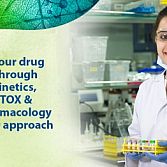How are Pharmaceutical Drugs Made?
Drug researchers often only have ten years or fewer of patent exclusivity on branded medications once they reach the market because the full drug development process typically takes between ten and fifteen years from beginning to end. Step 1: Discovering new drugs and validating targets Work on discovery is done as the first step in the medication development process. This is the point at which pharmaceutical corporations decide which molecule, like a gene or protein, to target with a medicine. The medicine maker will also at this point establish that the molecule is, in fact, connected to the ailment in the issue. The drug development company will select the therapeutic compounds that show potential after evaluating a number of them. Step 2: Testing before use Preclinical testing, which in turn is broken down into two constituent parts: in vitro and in vivo testing, is the next stage in the process of drug development. In vitro testing looks at how the drug molecules react in test tubes in a lab environment. Drug compounds are examined using animal models and other living cell cultures during in vivo testing. Step 3: Apply an investigational new drug Before starting human clinical trials, the FDA must receive an application for an investigational new drug in the third phase. The FDA will now closely analyze the preclinical test reports, consider any potential side effects and other safety concerns, check the drug's chemical makeup and proposed mechanism of action, and take a first look at its contract manufacturing procedure. Step 4: Phase 1 research trials A relatively small, often between a dozen and a few dozen, healthy population will participate in the initial stage of human clinical research, which will exclusively be concerned with safety. This phase of research examines a drug's absorption and elimination from the body, potential adverse effects, and whether or not the drug is having the desired impact. Step 5: Phase 2 research trials There are two significant differences between early-stage and mid-stage trials: the patient pool expands from a few dozen to possibly 100 or more individuals, and the patients being addressed are no longer good health volunteers but rather persons suffering from the condition in issue. Phase 2 trials still devote a heavy emphasis on safety, closely monitoring any short-term side effects, but they will start to place more emphasis. Step 6: Phase 3 research trials Safety is still a top concern in phase 3 studies, but efficacy is also very important here. FDA approval for phase 3 trials with instructions for a strictly delineated primary endpoint to assess the success or inability of a tested medicine is given to drug developers. Step 7: Application for new drugs The FDA must receive a new medication application, which is the seventh and easiest step in the drug development process. An NDA, which incorporates all research and safety data considered throughout each of the six preceding processes, can be thousands or even 100,000 pages long. Step 8: PDUFA determination date The FDA often waits until the PDUFA date to announce its choice. In essence, the FDA has three options: it can either approve a medicine, deny it outright, or ask for further details by writing a detailed response letter. Step 9: Clinical investigations (Phase 4) After step eight, a drug can technically reach your medicine shelf, but that doesn't imply the drug researcher is yet free from responsibility. Even after clearance, the FDA frequently asks for long-term safety studies, during which drug companies are obligated to provide periodical reports to the FDA outlining any adverse medication reactions.
Reactions
Be the first to write a review.
Author
Akash TrivediJubilant Biosys is a contract research organization that provides comprehensive Drug Discovery Services and Contract Research services in partnership with leading worldwide pharmaceutical and healthcare companies.

